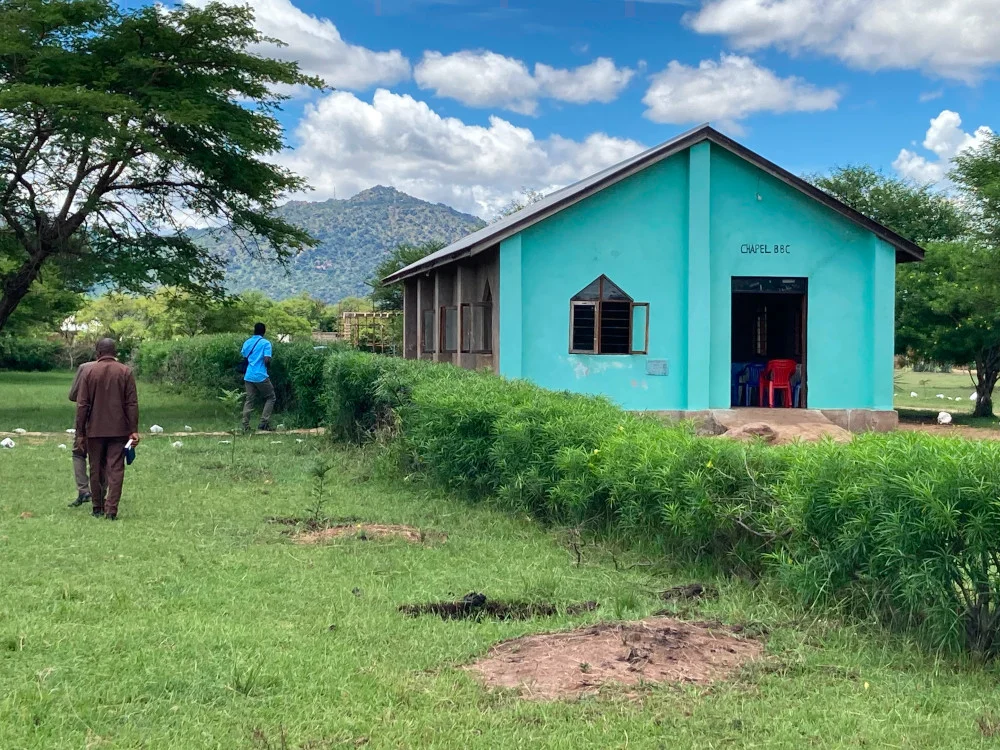Just as 15-year-old Ruby Roberts from Sydney has discovered Tanzania, missionary Helen Hoskins is learning how to live as an Australian after 40-plus years serving there. Their lives intersected today in the Tanzanian town of Bunda, Hoskins donating her home to the Diocese of Mara now that she lives in Australia, and Roberts experiencing Tanzania for the first time.
The youngest member of our team was mobbed when she turned up at Bunda Girls School. She was weraing her school uniform, and was surrounded after class mosh-pit style.
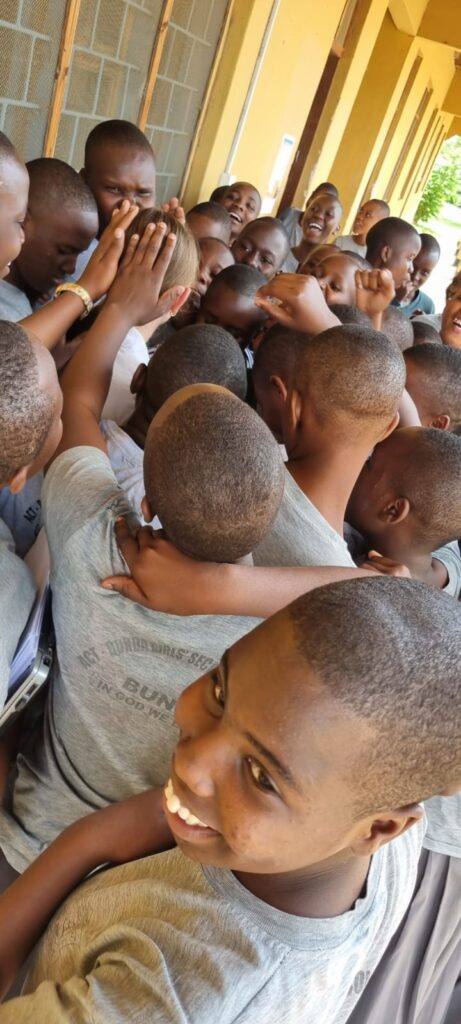
“My school, Roseville College [Sydney], packed a bag full of books to give to Bunda Girls School, and today we handed that bag over to the principal and filled up their library with some textbooks and some novels,” Ruby tells The Other Cheek. “I am unsure how many books, but I know we bought 19 kilos.”
The Other Cheek: “What interests me most about this is what it’s like for you as a Christian kid at the school to know good things like this are happening because it is a Christian school.”
Ruby Roberts: Yeah. It’s really nice to know that. And it’s awesome to know that our school can be doing something like that to help another school in a place that’s less fortunate than us.”
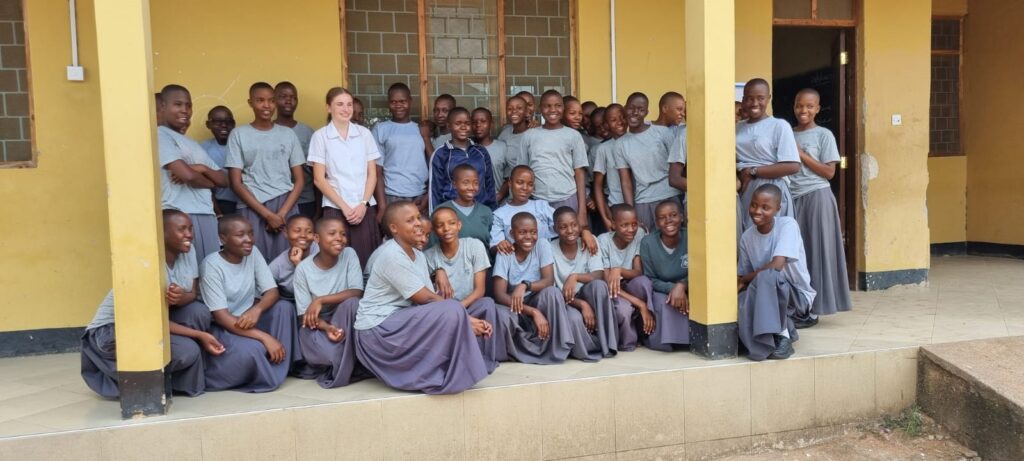
The Other Cheek: As someone who wants to tell the other kids at your school about Christianity, does this help you point out that Christianity can be good for the world?
Ruby Roberts: Yes. Being here has shown me that even if your situation is very hard, and it’s a very tough life to live. God is still working in amazing ways through people, and he’s just providing people with a place to live, even if it may not be the most glamorous place. He’s just still working through people to make sure his gospel is spread around the world.
The Other Cheek: And would you go back and encourage the school or the girls to do more?
Ruby Roberts: Definitely. We are going to communicate with the school and see if we can organise a fundraiser to raise money for Bunda girls to get them some more laptops because lots of their laptops and computers have broken, which is making it hard for them, for the teachers to teach and to get information that they need. So we will do a fundraiser to raise some money for them.
What did I know about Tanzania at 15? Probably that it used to be a German colony handed to the British after WWI and that there were a lot of Australian missionaries there. At the peak, there were 120 CMS missionaries there. Today there are two, and shortly to be one.
Helen Hoskins served as a CMS missionary for decades, telling us the story of the “strawberry pink villa”, the house she handed over to the Diocese of Mara tonight. “Welcome to the Strawberry Pink Villa for another ten minutes (referring to the handover)”.
She told the story of the four houses she lived in Tanzania, starting from her first time here. “I lived at Nyakato Bible College, the only one in the Victoria Mwanza diocese, which is now nine. Four single women living in a small house. Four single women teaching at the college. One of them was Barbara Spring, who had done 40 years; now I have done 40 years too. Now four single women living in each other’s pockets is not easy. Barbara was the one who kept the peace.
“But I wanted to be out in the villages. So I lived for four years in a small town and ran a church with a pastor. I lived as the only white person in the town, with no electricity and a kerosene light. It was a happy time. But without going into details, there was a problem in the diocese, and I had to leave. I got a letter saying I had to leave the country in a fortnight. But I didn’t.”
Instead, the Bishop of Mara invited her to do Christian education in the villages – a combination of what she had done in Bible College and her small town. That’s when she came to Bunda. She lived again as the only white person in the town. In 2001 CMS built a house for her on the Girls Brigade site, Girls Brigade (GB) was a big part of her work. Later they built a hall. Then they added the GB sewing centre, “as, after 12, the girls stopped coming to the Girls Brigade. They were married and pregnant. So we made a house into a hostel for safety.”
Helen’s heart was so much in Tanzania that she found CMS constraining with the need to be back in Australia every three years for six months, so she “retired” from CMS and then came back as a short-term missionary.
“I wanted to be free from CMS, so I left their house, found this land, and started building a small house on part of it to have a neighbour.
“I decided that my house should be pink. So I went to the paint shop and found a colour called strawberry pink. It’s not the pink of strawberries; it’s the colour of a milkshake.
Helen Entwhistle (another missionary) provided a literary reference: Gerald Durrell’s My Family and Other Animals tells of his family’s time on Corfu, in the “Strawberry pink Villa”. The name stuck. Hoskins moved in in 2015.
In a non-Christian blog, it would be appropriate to say it would be her forever house. But that doesn’t fit for us, so let’s say it was planned to be her time-here-on-Earth house.
But then, on a home visit just before covid, a routine colonoscopy found something suspicious. A follow-up scan found a tumour on her pancreas. The next day she vomited blood. Rushed to the hospital, she had a ten-hour surgery.
Three years later, she’s alive with no chemo or radiation.
Covid lockdown was no fun. She worried, “What will Covid do to Tanzania? Will it kill all my friends?”
She came to realise during lockdown that God had relocated her. She had hoped, for example, to see Shalom school, a recent project for her progress to Standard (class) seven, up from Standard two, the stage she had left them with.
Ministry in Australia includes preaching at St John’s Mona Vale (Northern Sydney) and three days a week volunteering in aged care. She finished her tale of four houses by saying, “I am here today to say goodbye to my Strawberry Pink Villa.”
“Helen, some of us have known of your work for as long as we have been Christians,” Archbishop Kaniska Raffel replied. “That’s certainly true in my case.
“We thank and honour you for your 40 years of service in this country. We know you are not a super Christian but a faithful and obedient one.”
After a dinner at the Strawberry Pink Villa, Kaniska unveiled a plaque declaring it was now the Bishop’s lodge of the Diocese of Mara. And he and Helen cut the cake.
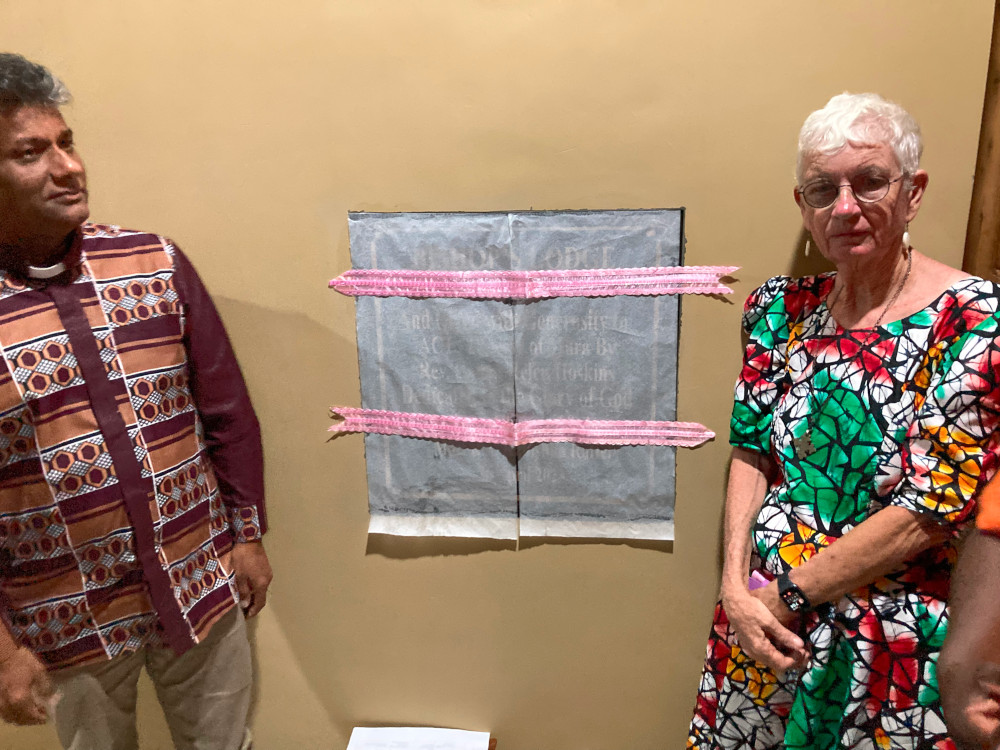

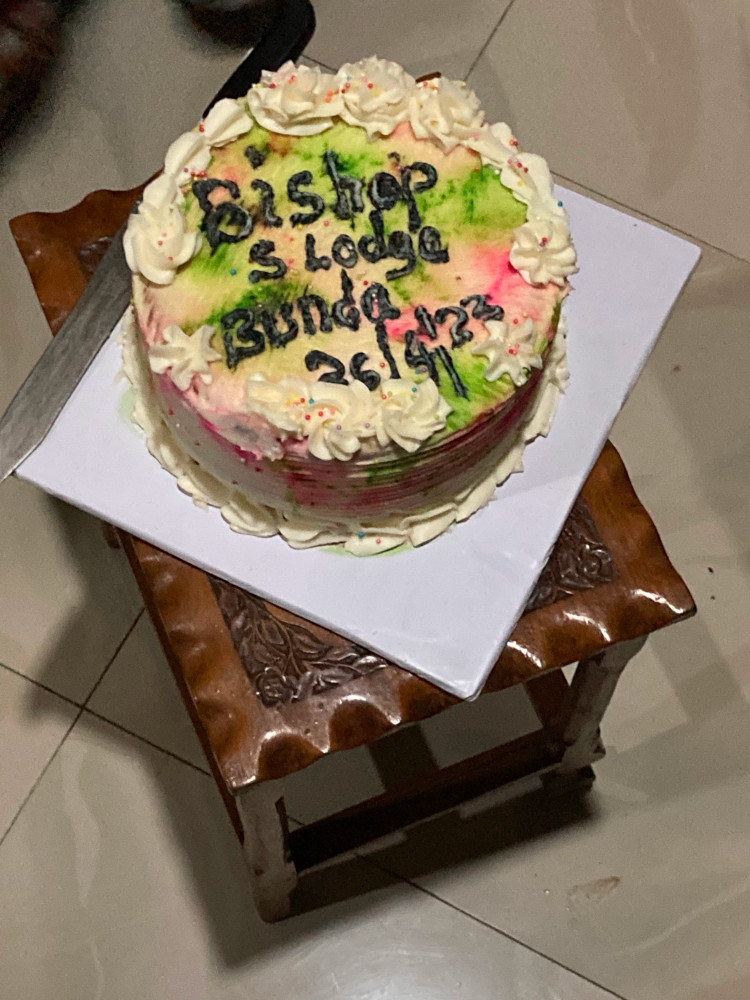

At Bunda Bible College some students have to eat outside because the dining hall is too small. It shares 110 acres given to the church by the government ten years ago. Anglican aid is helping with major developments on both sites. One new building was funded by one of the buildings.
Anglican Aid student sponsorships support 19 of the 81 students, 15 of whom are women. Some of the others are funded by Gafcon. The sponsorships are based on child sponsorship schemes – only adults are involved. Dave Morgan from Sadlier Anglican in an unwoealthy part of Sydney got to meet Frank, their sponsored student. He was married three days ago to Esther, and became a Christian after a jail snetence. “I wanted to be with God for the rest of my life. Gof is my riches anf my heath.
Morgan said “The congregation gave enough two years ago to support frank for 3 years. They will be so encouraged to hear more about Frank.” If Sadlier can do it, what about your church?

